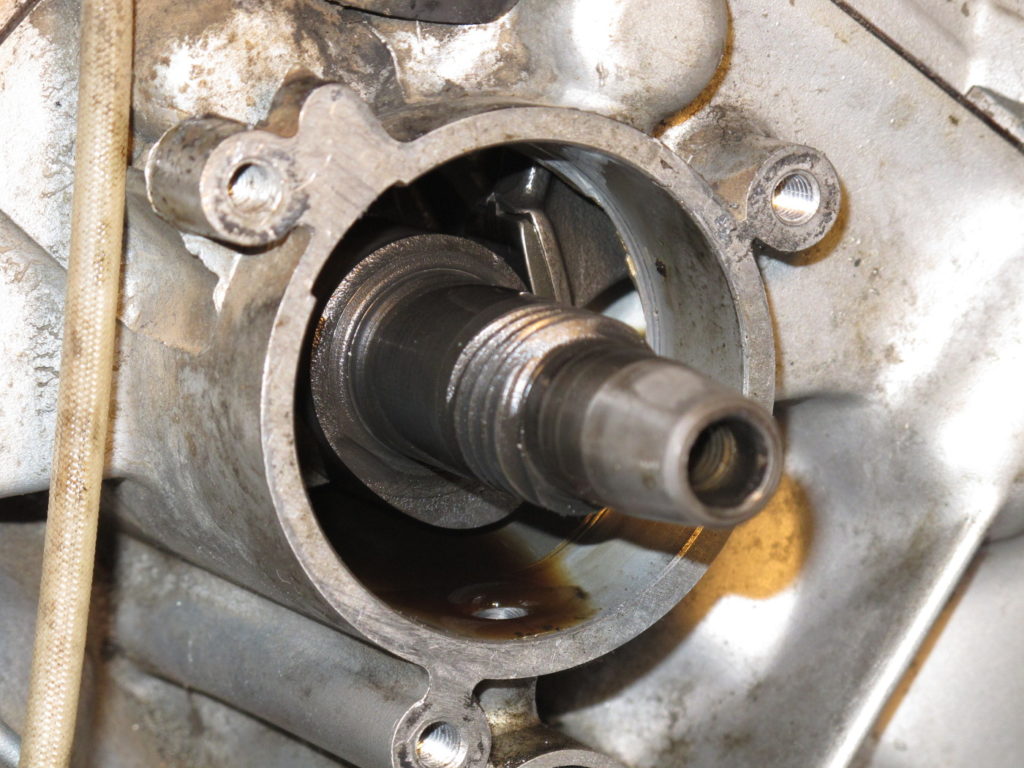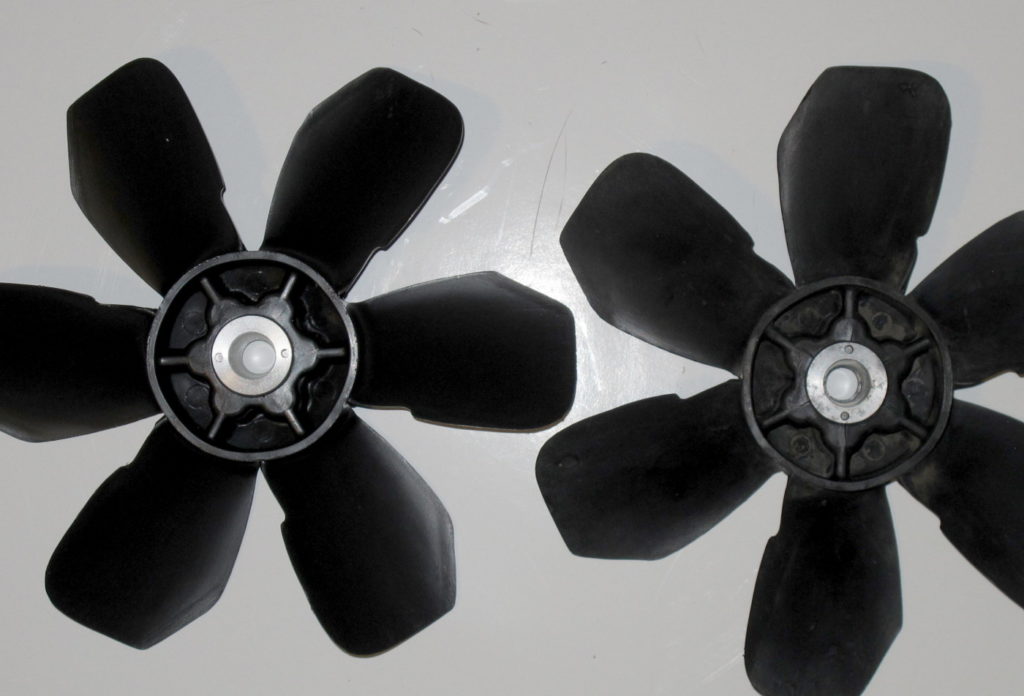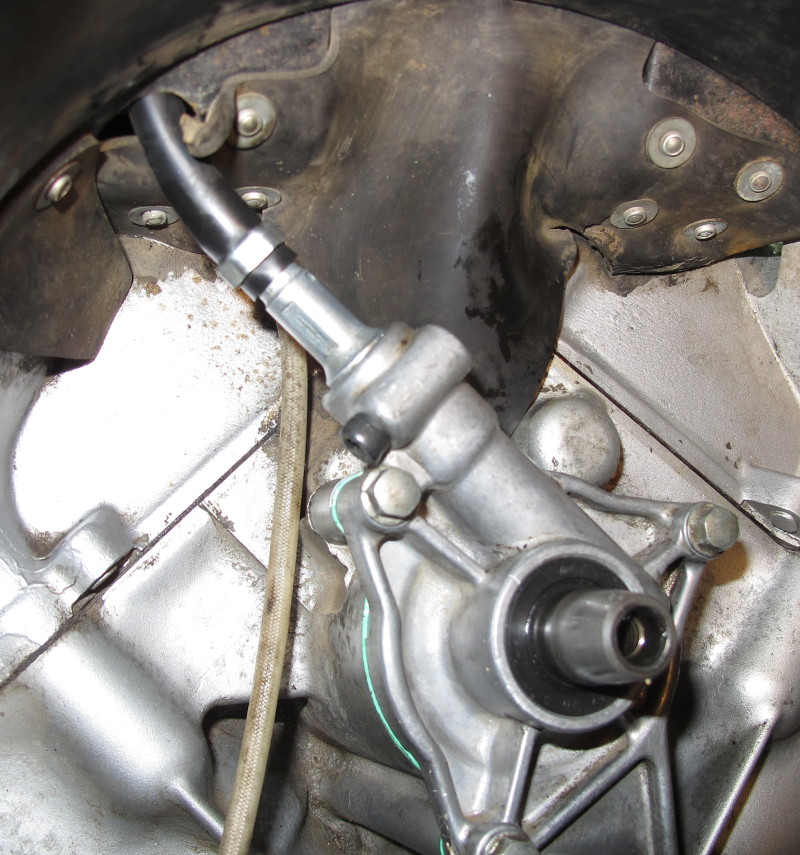Mileage: 29,404
Maintenance Summary:
- Cleaned and greased rear shock upper pivot bolt with high-moly grease.
When I recently serviced the rear suspension the one thing I didn’t do was service the top pivot bolt on the rear shock; I couldn’t figure out how to get to it. According to the service manual you can service the bolt without removing the air box. Frankly, I couldn’t see how.
Look for the red arrow near the center of the picture below to find the bolt in question. Here I’ve managed to get a socket on the bolt head using an socket extension and universal joint. The extension passes through a narrow gap between the airbox and the frame. Now, it might be possible to remove and re-install this bolt through this gap without removing the airbox (or carbs), but I don’t see how.
Note: The nut on the left side of the shock is fixed in place making this job a bit easier.
 The carbs are easy to remove on this bike, easier than the air box, so that’s what I did to gain easy access to this bolt. The bolt was in very good shape with a little bit of old, very dry grease remaining. I cleaned the bolt and coated it with high-moly grease before re-installing.
The carbs are easy to remove on this bike, easier than the air box, so that’s what I did to gain easy access to this bolt. The bolt was in very good shape with a little bit of old, very dry grease remaining. I cleaned the bolt and coated it with high-moly grease before re-installing.
Note: It’s a lot easier to remove and re-install this bolt with the rear wheel supported just enough to remove pressure from the bolt. I used a block of wood and a large screwdriver under the tire. When the bike is on the centerstand, the shock supports the rear wheel.
I have the seal required to rebuild the rear shock. Those are no longer available from Honda, but I found a NOS part on eBay. Since the shock is still holding air reasonably well I’ve decided not to attempt to rebuild the shock at this time. Many people replace this shock with something else rather than rebuild them.








